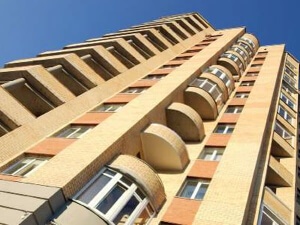Leading the way to a sustainable future
 Thermal bridges at floor slabs are often overlooked in energy standards and common design practice. The accepted truth seems to be that structural members to support cladding cannot be avoided and the area of the steel or concrete bypassing the insulation is small compared to the total wall area. Therefore the impact of floor slab details on the total thermal performance must be insignificant and there is not much you can do about it anyway.
Thermal bridges at floor slabs are often overlooked in energy standards and common design practice. The accepted truth seems to be that structural members to support cladding cannot be avoided and the area of the steel or concrete bypassing the insulation is small compared to the total wall area. Therefore the impact of floor slab details on the total thermal performance must be insignificant and there is not much you can do about it anyway.
The inconvenient truth is much as 50% of the heat flow through the wall might actually be due to thermal bridging at the floor slab, if solutions to minimize thermal bridging at floor slabs are not implemented. This discrepancy widens as we add higher levels of insulation into wall assemblies but don’t consider the impact of the details. The good news is that there are viable solutions to overcome current shortcomings in energy standards and design practice. The outcome of implementing these solutions will lead to more energy efficient buildings and more efficient use of building materials.
The Challenge
There are two challenges with evaluating the impact of thermal bridging at floor slab details:
- There are a variety of floor slab details that can be integrated into a variety of wall assemblies.
- The heat-flow paths at floor slabs can be complex and are often three-dimensional (3D).
The prevailing North American method to account for heat flow through parallel paths, as is often assumed when evaluating the impact of floor slab details, uses weighted averages to combine heat flows. The main drawback to this method is that an “area of influence” must be assigned to the floor slab detail, which is not only often difficult to determine but also not straightforward to use in practice. This process is not straightforward because of the 3D heat flow paths typically associated with the details and the “area of influence” are usually unique to the specific details and assemblies. Moreover, the true impact of the additional heat flow through the floor slab detail is blurred by the adjacent highly insulated wall assembly. As a result, it is difficult to effectively evaluate options using this approach.
This Solution MH provides the motivation and direction to overcome these challenges by showing how significant floor slab details are on overall building envelope thermal performance and how the impact of details, not typically considered part of an assembly, can be effectively evaluated in practice using a linear transmittance approach.

